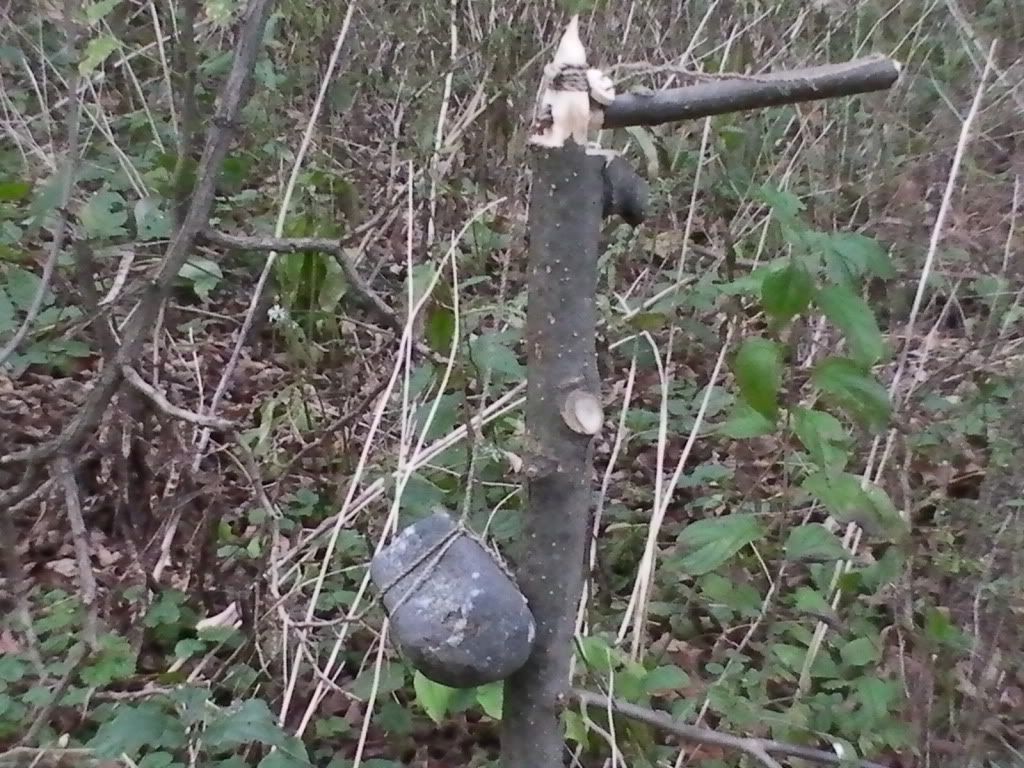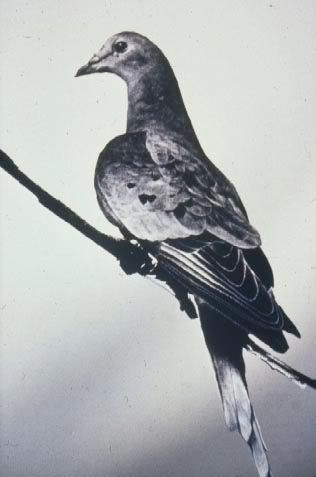I remember getting my first deer (only a few years ago, even though I have been hunting for literally half of my life), and how messed up it left me for a long few weeks. I had caught, killed and cleaned many a fish and bird. I had butchered countless deer and moose. Death of a fellow moving, breathing creature was definitely not something new for me. However as I watched the deer (a young but very large buck) seem to suddenly freeze on impact from my slug penetrating his chest and abdomen, and then keel over as if his legs were made out of rebar rather than tendons and muscles, it effected me in a way that to this day I cannot fully explain. I was happy, but disturbed. I knew I had just provided for my family. Acquired a hide and brains for new material. I knew the bones and sinew would bless me with more supplies. But to see a life drain out of an anima with such sudden swiftness (he thrashed for but a moment) is truly emotional. I take the subject of catching any animal very seriously -regardless of size or species. But at the same time, it is joyful. I whoop. I shout. I even laugh. However during that, I do what my people have always done; I pour water into the animal's mouth, I offer tobacco in thanks, I sing a small song of gratitude. I make sure the being sees the western sky. These things are tasks many Anishnaabe men (and women) feel obligated to do for the animal whose life we extinguished. Its' a give and take. The animal has done their work (sacrificed themselves' for us), now it is our turn to make good on the deal: by making sure we honour the animal.
However, this does not mean jokes are taboo, or banished. We laugh, and joke; "Holy crap this deer's liver is big enough to belong to a Frat Boy!", or "That goose is small enough to be a duck!". This is not disrespect in our eyes. Its' having fun with the animal who is still present. Teasing is a sign of affection in countless Native cultures here in Canada, just as it is in many non-Natve cultures. However, for us, it is really the way of life. Joking, and comedy are what bond all humans, and to find something humorous in an emotional moment is really a beautiful thing.
In this video, myself and my cousin butcher the deer that he caught just the night before. We skinned her in the dark, as we don't use knives between the gutting and butchering process. We skin the deer immediately after it is hung up, as this cools the deer, and is much faster than if we left the hide on for too long. It is also much better for the hide, as decomposition can happen in mere hours in the right circumstances. You won't hear much dialogue other than the joking (which I mentioned a moment ago). But it shows almost every step taken after the skin and head are removed.
I want to say a few things about this deer. I cannot speak on behalf of my cousin. I do not know if he went through the same emotions as I have. Maybe he did, maybe he didn't. I do know however that this deer was taken down with the most humane of a shot any hunter could ask for. She maybe ran 40 feet in total, if that. We tracked her immediately, and very early on we could tell she would be dead just around the corner. It was a clean kill, and she never suffered. We found her within two minutes of tracking, and she was already passed on. It was the perfect shot. I was there when she was seen, I was there when she was shot, and I helped with every step of the process once that deer was hit. I am very honest when I say that I am proud of my cousin, and was deeply honoured to be able to share that moment with him. It is a moment that I know will live on with him for the rest of his life.
While we are on the subject of meat, maybe I should discuss some further developments regarding acquiring meat. The goose we caught was a winged bird that another hunter had shot earlier in the day. We saw the young northern Canada goose hiding under a dock, and it was very clear that the wing was severely damaged. It was part mercy, and part need for food. I got in my canoe and when I tried to get him, he had paddled away! He was struggling to stay above the water, and even then got well over a kilometre from shore before I caught up to him. This shows the tenacity of wildlife when survival is on the line. I have seen a squirrel get hit with a broadhead from twenty feet away, and still run through seven different trees before finally succumbing to the injury. I have tracked a lung-shot deer for over two kilometres. Once I was within range, he was put out of his pain very swiftly with a twelve-gauge shotgun blast to the head. He was dead on impact. Once again, I took tobacco out and offered him thanks. I opened his mouth and let him have a drink, and while paddling back to shore, I sang him a song of gratitude, always keeping his head facing west.
Beyond meat that has already been acquired, I have a few projects underway. This weekend I will be purchasing some steel rods. I will be basement-forging them into special spikes made specifically for spearfishing. The Anisnaabeg are well known for their history as fishermen, especially with fish fences, and with spears. I will be making the shafts six or seven feet long out of cedar. This is because cedar is straight and light. Once done, two spikes that are seven inches long and barbed all the way up. We live where pickerel, bass, pike and perch all flourish, and our ancestors' way of life revolved around spearfishing.
The other project is the buckthorn bow. This project was originally a theory I had after spending a week with Mors Kochanski. The theory was that I could take a dense, yet elastic wood, that is an invasive specie that is overwhelming our forests, and produce serviceable and strong bows from it. Purging Buckthorn is a very invasive tree that overshadows other forest plants and goes to leaf earlier and remains in leaf longer than most of our native hardwoods. So my goal was to be able to give our native trees a bit of an advantage, be repeatedly cutting back the buckthorn, and using it for tasks (knife and axe handles, basketry material, bows and lodge poles) and leave our native trees be. So far the theory I had ha already been proven by a gentleman over at Primitive Archer, and even Quicky Bows I have seen made by Skeet Sutherland from Sticks and Stones Wilderness School. However, ever being the man trying to return to a traditional Anishnaabe diet and lifestyle, I have decided to produce an Ojibwa style Flatbow from this wood. If you want to see a good example of an Ojibwa bow, check out this video from my friend Mike at Boarrior Bows. This in my eyes is something very important and specific, as my people are currently struggling with the idea of self-determination through decolonization. In my eyes, we cannot go back in time. We must move forward, and with that, we must accept modern influences, or at least introduce western materials into our more "primitive" technologies. A good example is beer bottle glass arrowheads, such as the one produced in the video of Brian from TrackersNW. These are very popular and very very effective. I have also made knives, and spearheads from the glass from old televisions. I've been saving a good piece to later make into a clovis point, such as the one being made in this video with stone. My belief is that if we take traditional technology and philosophies, and blend them with the materials available now by recycling and reusing, it can be a lot better for all of us. Again, which would be better for our environment? Practising our traditional skills with materials that are already at risk (one of the best woods in this part of Canada is white ash, which is being targetted by the Emerald Ash Borer), or with materials that are invading or causing problems in our environment (such as purging buckthorn)?
So as we speak, I have several three-inch and four-inch diameter staves of purging buckthorn seasoning in my house for the winter. I stripped the bark, and dipped the ends in pine pitch to prevent cracking. By Baakade Giizis (The Hunger Moon/February), I will be able to start shaping them into traditional style bows.
I should have a video up sometime next week about the fishing spear making. Hope you all enjoy it!



